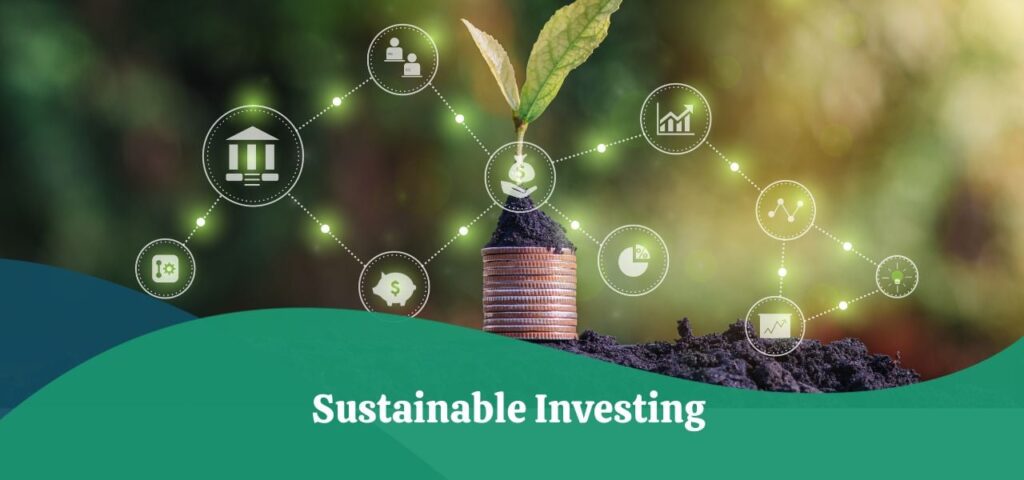Introduction : What Is ESG (Sustainable) Investing?
Sustainable investing, commonly referred to as ESG (Environmental, Social, and Governance) investing, is transforming financial markets in 2025. Investors, fund managers, and corporations worldwide are reshaping investment priorities, balancing financial returns with ethical responsibility. This in-depth guide explains ESG investing, why it matters, how to get started, strategies for success, and the key trends shaping the future.
What Does ESG Mean?
Environmental — focuses on a company’s impact on climate, resource management, waste, and carbon footprint.
Social — considers how businesses treat employees, diversity, labor standards, human rights, and contributions to local communities.
Governance — covers leadership, executive pay, shareholder rights, transparency, and business ethics.
Companies are scored based on these criteria by third-party agencies. Investors use ESG ratings to make informed choices—rewarding companies that contribute positively and avoiding those that pose social or environmental risks.
Why ESG Investing Matters
Mainstream Acceptance
- More than $41 trillion in assets globally are now managed under ESG principles.
- Regulatory bodies in the US, EU, UK, and other regions are introducing mandatory sustainability disclosures.
- Large institutional investors, including pension funds and insurance companies, increasingly demand ESG integration.
Financial Performance
- Research increasingly shows that high-ESG companies often deliver superior long-term returns and lower risk.
- Resilience during crises: Companies with robust ESG strategies weathered the COVID-19 pandemic and supply chain disruptions better.
- Lower volatility: Good governance and risk management reduces scandals, lawsuits, and regulatory penalties.
Social Responsibility
- Millennials and Gen Z, who now represent over half of global investors, want their money to drive positive change.
- Tackling climate change, poverty, and injustice are not just moral imperatives but strategic drivers for investment returns.
How ESG (Sustainable) Investing Works
Screening
Positive Screening — Investing in companies with strong sustainability track records (e.g., renewable energy, fair labor).
Negative Screening — Excluding companies involved in controversial sectors (e.g., tobacco, weapons, fossil fuels).
ESG Integration
Investment managers analyze ESG factors alongside financial metrics when assessing companies.
Portfolio weighting may increase for firms with high ESG scores.
Impact Investing
Invest directly in businesses or funds that solve specific social or environmental problems—such as microfinance, green bonds, or clean tech start-ups.
Shareholder Activism
Investors engage companies—voting on policies, pushing for more disclosure, or improved practices.
ESG Ratings and Scores Explained
Independent providers issue ESG ratings for companies and funds:
- MSCI ESG Ratings: AAA (best) to CCC (worst) based on sector-specific risk/opportunities.
- Sustainalytics: Numeric scores ranking exposure and management of ESG risks.
- Bloomberg, Refinitiv: Aggregate hundreds of data points from company disclosures, third-party news, and controversies.
Tip: Always check a company’s or a fund’s latest ESG rating before investing.
ESG Funds, Stocks, and Investment Platforms
ESG Mutual Funds and ETFs
Most major asset managers (BlackRock, Vanguard, Fidelity) offer ESG-focused funds. Some top 2025 examples:
- Vanguard FTSE Social Index Fund
- SPDR S&P 500 ESG ETF
- iShares MSCI Global Sustainable ETF
Direct Stocks
Global leaders in ESG performance include:
- Tesla: Renewable energy and electric vehicles
- Unilever: Sustainable sourcing and community engagement
- NextEra Energy: World’s largest producer of wind and solar energy
Green Bonds
Fixed-income securities funding climate or environmental projects. Governments, banks, and corporations issue them—returns can be competitive.
Robo-Advisors and Apps
Digital platforms now allow investors to filter for ESG assets, set sustainability goals, and track impact (e.g., Betterment, OpenInvest).
How to Get Started with ESG Investing
Define Your Values and Goals
Do you care more about environmental protection, fair labor, or ethical governance?
Prioritize sectors and issues (e.g., climate tech, gender diversity).
Research ESG Ratings and Fund Holdings
Review up-to-date ESG scores and portfolio transparency.
Use third-party sources (Morningstar, MSCI, Bloomberg).
Pick Your Approach
- Passive: Invest in diversified ESG ETFs for simplicity.
- Active: Select individual stocks/funds with the best ESG scores.
- Impact: Allocate a portion to funds or businesses designed to drive change.
Monitor Progress
Track how your investments perform financially and in terms of sustainability.
Adjust portfolio annually as ESG standards evolve.
Key ESG Investing Strategies
Diversification
ESG investing covers all sectors, not just clean energy.
Avoid Greenwashing
Scrutinize whether companies truly meet sustainability standards or just claim to.
Long-Term Perspective
ESG factors may take years to translate into superior returns.
Blend Finance with Values
Find personalized balance between profit and purpose.
Global Trends in ESG Investing
Regulatory Updates
- EU Sustainable Finance Disclosure Regulation (SFDR) standardizes reporting.
- SEC proposals enhance climate-related risk disclosures for US-listed firms.
- China and India increasing sustainability mandates for corporations.
Technology and Data
Artificial intelligence tools analyze huge ESG datasets for better investment insights.
Blockchain supports more transparent supply chains and carbon tracking.
Rise of Social Impact Funds
Growth in funds targeting affordable housing, diversity initiatives, and health equity.
Climate Risk
Carbon transition risks increasingly priced into equities and bonds.
Insurance and reinsurance sectors adopting ESG models for catastrophe prediction.
Common Challenges and Risks
Data Quality
ESG disclosures may be inconsistent or limited.
Comparing Standards
Lack of global harmonization in what “counts” for ESG.
Performance Lag
ESG strategies sometimes underperform in boom cycles, outperform in downturns.
Frequently Asked Questions
Q1: Is ESG investing only about the environment?
A: No! Social and governance factors (e.g., labor rights, board diversity, executive pay) are equally critical.
Q2: Can ESG funds outperform traditional funds?
A: Many studies show similar or better risk-adjusted long-term returns—but short-term performance varies.
Q3: Are ESG investments tax-advantaged?
A: In some jurisdictions, “green bonds” or social investments may offer preferential tax treatment—check local laws.
Q4: How to avoid greenwashing?
A: Verify ESG credentials with third-party ratings, review company disclosures, and look for independent assessments.
Step-by-Step Example: Building an ESG Portfolio
- Set up an account with a reputable broker (check for ESG screening tools).
- Choose one global ESG ETF for core exposure.
- Add 2–3 direct shares (Tesla, Unilever, NextEra Energy, etc.) using MSCI ESG ratings as a guide.
- Allocate 10–20% to green bonds, microfinance, or impact funds.
- Review annually, adjust allocations as new sustainability ratings and disclosures emerge.
Conclusion: Why Should You Care About ESG Investing?
ESG investing lets you:
- Pursue financial returns and drive positive global change.
- Support companies building a resilient, equitable future.
- Reduce portfolio risk from environmental disaster, regulatory fines, and reputational harm.
- Appeal to the rising cohort of value-driven investors and consumers.
The most successful investors in 2025 and beyond will be those who integrate ESG principles as central pillars of their investing approach—balancing profit with purpose.










